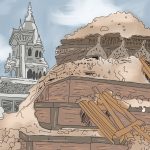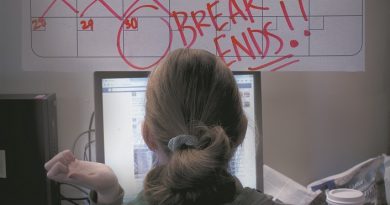Lessons from Nepal: Hope for the Best but Prepare for the Worst
As Pacific Northwesterners, we often take for granted how lucky we are to have avoided natural disaster. Aside from the Mt. St. Helen’s eruption of 1980, we’ve been fortunate enough to live in relative safety. But don’t get cozy just yet, because let me remind you that we live in a state with five active volcanoes. Additionally, our coastal border puts us at risk for tsunamis. If that’s not enough to scare you, take a second to let this sink in: According to United States Geological Survey, Washington State is one of 16 states that are classified as “high risk” for earthquakes. If there’s one thing we learned from Nepal, it’s that disaster can strike at any minute.
We must remain aware that what happened in Nepal could have happened to any of us. Although we cannot prevent earthquakes from happening, what we can do is make sure we are prepared if one hits.
After Chile’s 8.8 magnitude earthquake in 2010, the Associated Press reported that there’s an 80 percent chance that the fault located off of Southern Oregon and Northern California would break in the next 50 years and produce a mega quake. A “mega quake” is an earthquake of a 10.0 magnitude or higher.
Do I even need to go into detail about just how ugly that would be? Thousands of people would die. Billions of dollars worth of damage would follow. Historical buildings would crumble to the ground. Those lucky enough to survive would find themselves without a home. It’s not a fun thing to think about, but it’s something we need to think about. How do you plan to protect yourself and your family in the event of a natural disaster?
The first thing you need to do is stockpile survival supplies. The CDC (Center for Disease Control) recommends stockpiling enough supplies to last you three days. However, after the quake in Nepal, three Americans (Corey Ascolani, Della Hoffman, and Eric Jean) were left stranded in the Langtang mountain range for five days before rescue crews were able to reach them. The Telegraph reports that another woman was rescued after spending more than five days trapped underneath rubble. In response, the International Business Times reports that, “[…] for many villagers, the lack of government assistance over the past five days has provoked vocal and visible anger.” Clearly, people need to stockpile more than just “three days” worth of supplies.
So what should these supplies entail? For starters, you should have enough food and water to last you at least a week. In addition, you should always have a first aid kit in store. Other items you’ll want to keep on hand include a flashlight with batteries, a rescue whistle, and a battery-powered or hand-crank radio for communication. Keep in mind that these are only the most basic of supplies. If you want to expand upon your readiness, blankets, flares, and a satellite phone are excellent tools to better prepare you for a natural disaster.






